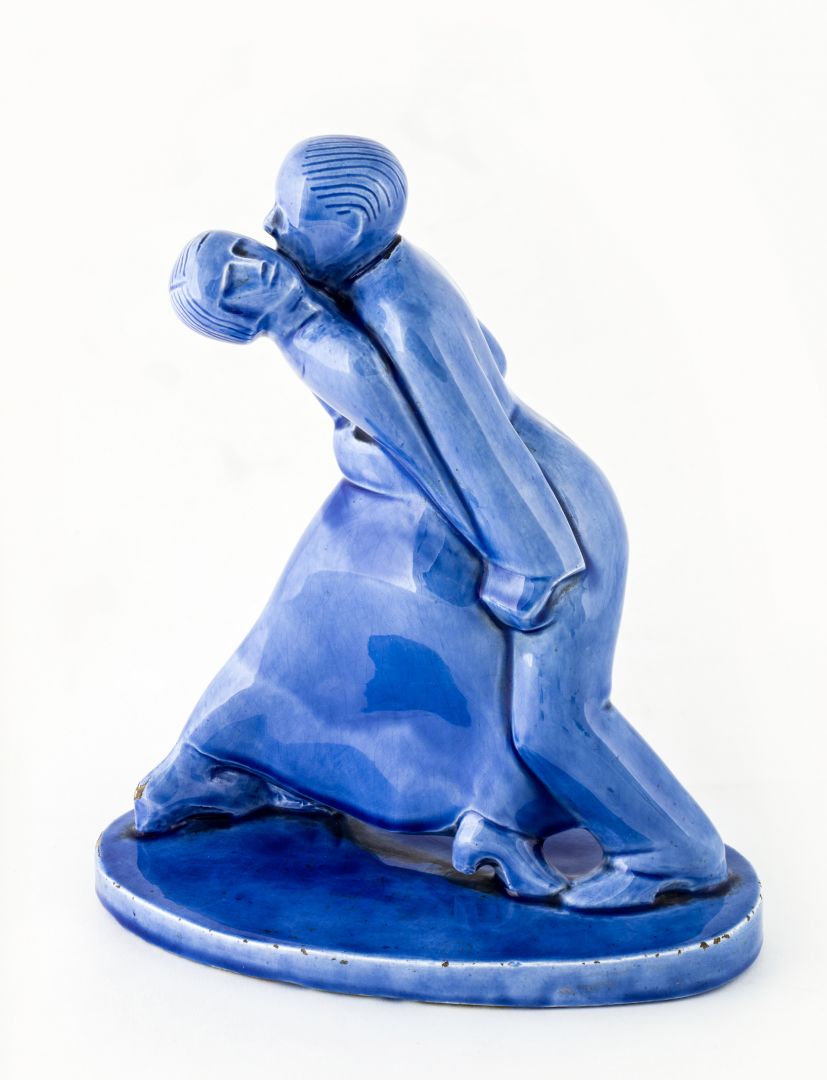Hall 3 - 5. view
Dance
RUTTKAY, GYÖRGY (1898–1974)
Dance, c. 1930
moulded, glazed earthenware (ceramic); height: 22 cm; engraving at the edge of the base: R Gy
Fine Arts Collection, Inv. No.: 92.193.
György Ruttkay became known in Hungarian art history as a member of the MA circle of artists led by Lajos Kassák and as a member of the Hungarian activist movement. Later developments of his career are recorded by the historiography of Miskolc. The events following the fall of the Hungarian Soviet Republic steered his life on a new course. The artist attended law school and worked as a lawyer until retirement. Following years of work at Gönc, Szikszó, Košice and Szeged he settled down in Miskolc in 1950 and devoted his life to art once again.
In 1983, the Herman Ottó Museum purchased several painting and sketches from his legacy and paid tribute to the artist’s memory with an exhibition in 1984. His works and writings suggest that Ruttkay not only maintained his activist attitude and community-focused thinking throughout his life, but also his form language which aimed for expressiveness and structuralism.
Art historian Gertrud Goda describes the artwork on display as follows: ‘From the beginning of the 20th century, there was a distinct opposition to the past century’s forms of expression, both in terms of fine and movement arts. This sentiment discarded softer forms and paved the way for more rigid, square shapes. Russian ballet and the cubism of Picasso are fine examples of this trend and are synchronous with each other. This passionate extremism can even be observed in the ballroom dancing of the period between World Wars. Ruttkay uses large, clean geometric shapes to emphasize the rhapsodic movements of tango.’
The interest of the painter and graphic artist in sculpture was most likely piqued by his Miskolc-born sculptor wife, Lili Nyíry (1909–1996). The ceramic statue displayed in the gallery was purchased from the widow of the artist by the museum in 1992.
Andrea Pirint
